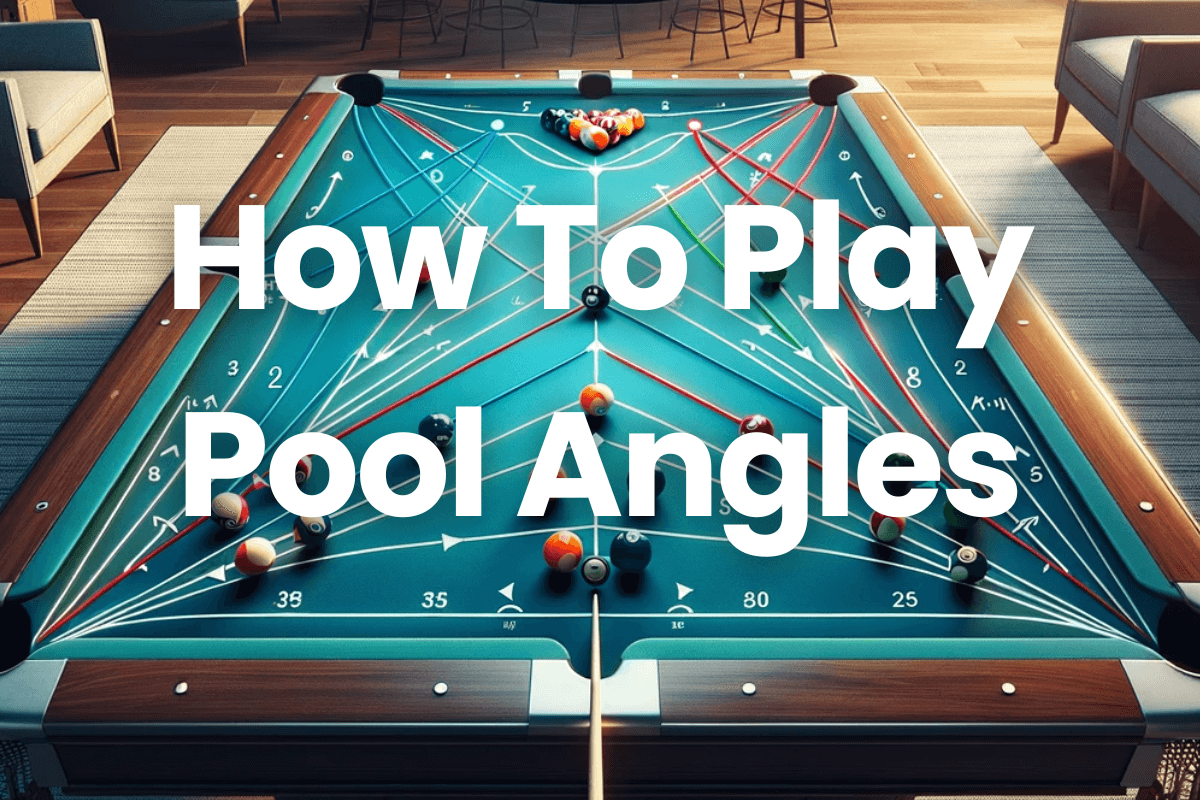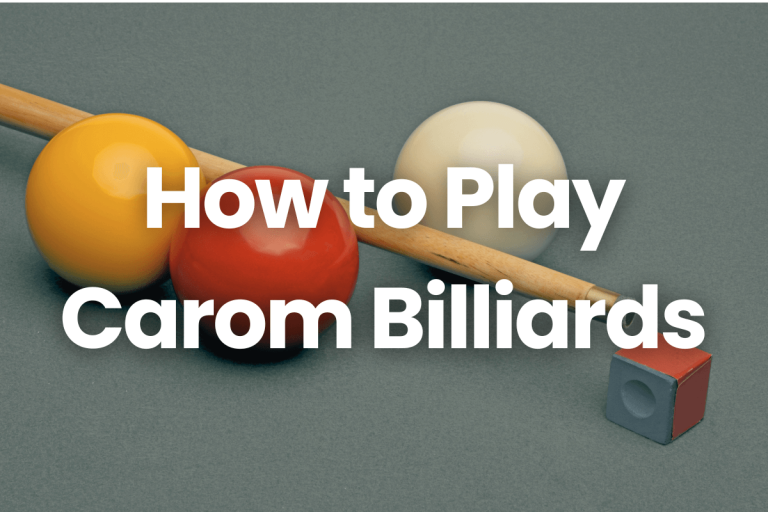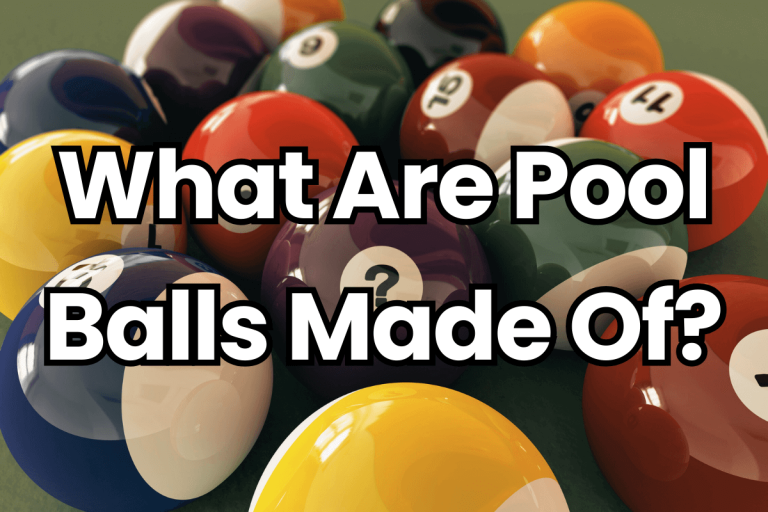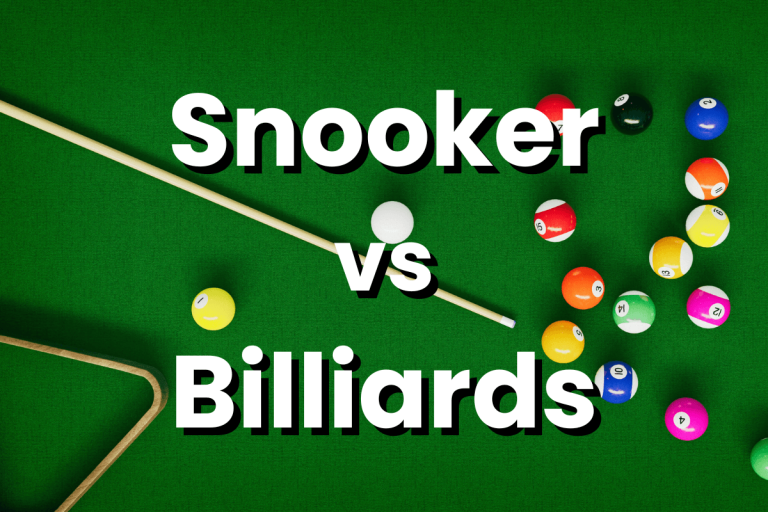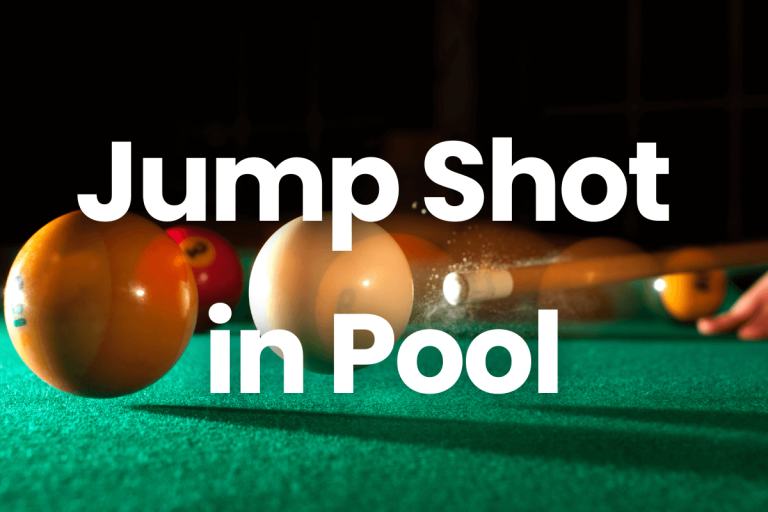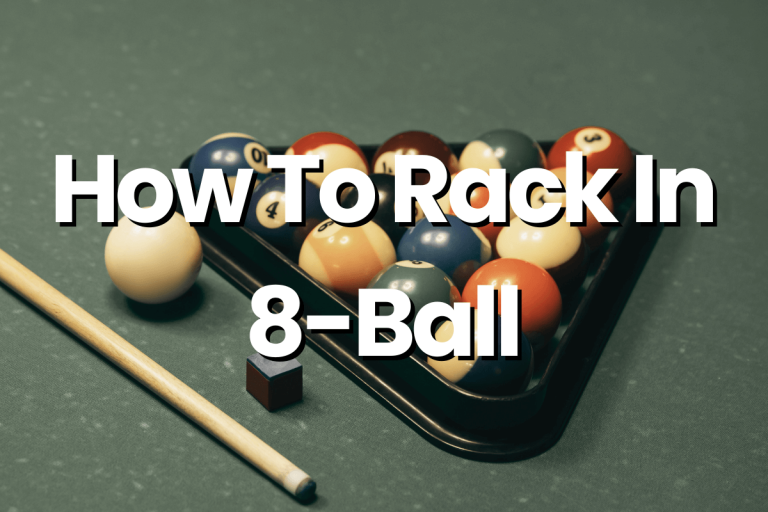Master in Pool Angles | How to Play Pool Angles (2024)
Welcome to the fascinating world of pool, where mastering the art of angles is not just a skill, but a game changer. In this guide, we’re diving deep into the importance of understanding and utilizing pool angles, a key component that separates novices from seasoned players. Angles in a pool aren’t just about hitting the balls; they’re about strategic thinking, precision, and foresight. Mastering angles allows you to control the game, setting up shots and defenses that can dramatically elevate your performance. Whether you’re a beginner aiming to improve your game or an experienced player looking to refine your technique, understanding pool angles is crucial.
The Basics of Pool Angles
Understanding the basics of pool angles is fundamental in transforming your pool game from average to exceptional. At its core, pool is a game deeply rooted in geometry. The pool table is a geometric playground where angles define the path of every shot. Recognizing how the cue ball, object balls, and the rails form various angles is crucial for precise shot-making.
The geometry of the pool table includes understanding the diamond system, which helps in aligning shots and predicting the cue ball’s path after contact with the rails. It’s about seeing the table as a grid where angles can be measured and used to your advantage.
Angles play a pivotal role in both offensive and defensive strategies. Offensively, they determine the trajectory of balls to pockets, helping you plan several shots ahead. Defensively, understanding angles is key in positioning the cue ball to limit your opponent’s options. A well-thought-out shot using the right angle can be the difference between winning and losing a frame.
In essence, mastering pool angles involves a blend of geometry, foresight, and strategy. It’s not just about hitting the balls; it’s about how you use angles to control the game’s flow, create opportunities, and outsmart your opponent.
Techniques for Calculating Angles
Mastering the art of calculating pool angles is a skill that can significantly enhance your gameplay. Here’s a step-by-step guide to help you estimate angles accurately:
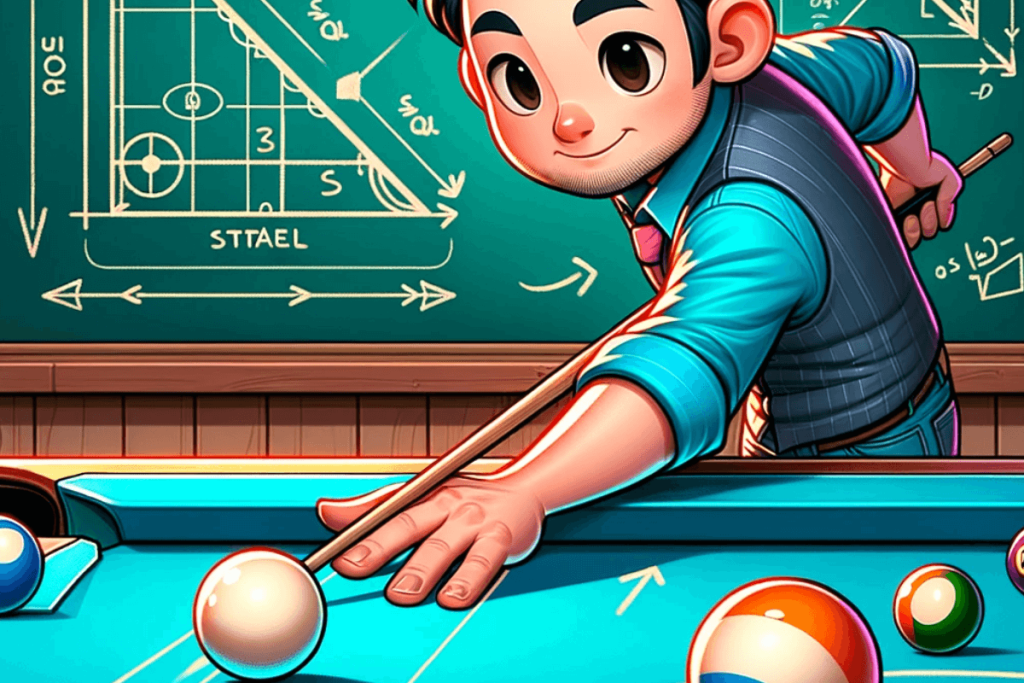
Visualizing the Shot
- Before taking a shot, visualize the trajectory of both the cue ball and the object ball. Imagine a line extending from the object ball to the pocket. This line is your target line.
The Ghost Ball Method
- Imagine a “ghost ball” at the point where the cue ball must strike the object ball. The center of this ghost ball should be on the target line. This method helps in visualizing the point of contact.
Using the 90-degree Rule
- Remember, when the cue ball hits another ball squarely, it travels at a 90-degree angle from the point of contact. Use this rule to predict the direction of the cue ball post-impact.
Estimating Cut Angles
- For thinner shots, estimate the angle between the line from the cue ball to the object ball and the target line. Practicing with different angles helps in developing an intuitive sense of this.
The Diamond System
- Use the diamonds on the table’s rails as reference points for calculating bank and kick shots. This system helps in creating a mental grid on the table for better angle estimation.
Practice with Purpose
- Set up specific shots repeatedly to understand how different angles affect the ball’s path. Experiment with various speeds and spins to see how they alter the trajectory.
Common Mistakes and Avoidance Tips
- Overestimating Angles: Beginners often overestimate cut angles, leading to missed shots. Start with smaller angles and gradually move to sharper ones.
- Neglecting the Speed Factor: The speed of the shot can alter the angle post-impact. Practice with different speeds to understand how it changes the ball path.
- Ignoring Spin Effects: Side spin (English) can dramatically change the ball’s direction. Be mindful of unintentional spin and practice controlling it.
- Not Adjusting for Distance: The longer the distance between the balls, the more precision is needed in angle calculation. Be extra careful with long shots.
By focusing on these techniques and being aware of common mistakes, you can significantly improve your ability to calculate and execute shots based on pool angles. Remember, like any skill, it takes practice and patience to master.
Practical Pool Angle Shots
Understanding and mastering different types of angle shots in a pool can greatly improve your game. Here’s a detailed breakdown of various angle shots, along with techniques for executing them effectively, complemented by visual aids and diagrams.
Cut Shots
- Description: Cut shots involve hitting the object ball at an angle to direct it into a pocket.
- Technique: Focus on the point of contact between the cue ball and the object ball. Adjust the hitting angle based on the desired direction. Ensure a smooth stroke and consistent cueing.
- Visual Aid: Diagrams showing various angles of cut shots, the point of contact, and the path to the pocket.
Bank Shots
- Description: Bank shots are made by rebounding the object ball off a cushion to a pocket.
- Technique: Use the diamonds on the rail as a guide. Calculate the rebound angle considering the angle of incidence equals the angle of reflection. Practice with different speeds and spins.
- Visual Aid: Diagrams illustrating the angle of incidence and reflection, with trajectory lines from the object ball to the cushion and then to the pocket.
Kick Shots
- Description: Kick shots involve hitting the cue ball to a cushion first, then rebounding to strike the object ball.
- Technique: Similar to bank shots but requires more precision in estimating the rebound angle of the cue ball. Utilize the diamond system for better accuracy.
- Visual Aid: Diagrams showing the path of the cue ball to the cushion and then to the object ball.
Combination Shots
- Description: These shots involve hitting the object ball into another ball to pocket it.
- Technique: Focus on the line connecting the balls and the line to the pocket. The contact point on the first ball determines the path of the second ball.
- Visual Aid: Diagrams showing the contact points and trajectory lines for successful combination shots.
Masse Shots
- Description: A masse shot is a trick shot where the cue ball is struck with a high degree of spin, causing a curved path.
- Technique: Elevate the cue stick at a sharp angle, and apply extreme spin on the cue ball. Requires a lot of practice and control.
- Visual Aid: Diagrams depicting the cue stick angle, spin direction, and curved path of the cue ball.
Key Points to Remember
- Accuracy in Angle Estimation: Accurate estimation of angles is crucial for successful execution.
- Controlled Cueing: Consistent and controlled cueing ensures the ball travels as intended.
- Adaptability: Each shot might require slight adjustments based on table conditions and ball positions.
These practical pool angle shots, along with their techniques and visual aids, can help players understand and execute complex shots, elevating their overall pool game.
Common Challenges and Solutions in Playing Pool Angles
Mastering pool angles involves overcoming some typical challenges. Here’s a guide to addressing these issues, along with expert tips and solutions.
- Misjudging Angles:
- Challenge: Players often misjudge the angles, leading to inaccurate shots.
- Solution: Practice with a laser pointer or use temporary markers on the table to visualize angles better. Study the geometry of the table and familiarize yourself with common angles.
- Difficulty in Visualizing the Path:
- Challenge: Visualizing the path from cue ball to object ball to pocket can be tough, especially for beginners.
- Solution: Use training tools like angle guides or visual aids. Practice the ‘ghost ball’ technique where you imagine the ideal contact point and path.
- Inconsistent Cueing:
- Challenge: Inaccurate or inconsistent cueing leads to poor execution of shots.
- Solution: Focus on developing a consistent stroke. Practice cueing techniques and maintain a steady stance and grip.
- Adjusting for Spin and Speed:
- Challenge: Applying the right amount of spin and speed affects the angle and success of the shot.
- Solution: Experiment with different speeds and spins in practice sessions. Understand how these factors influence ball movement and adjust accordingly.
- Reading the Table Surface:
- Challenge: Variations in table conditions, like cloth speed and cushion bounce, can alter expected trajectories.
- Solution: Spend time getting to know the table before starting a serious game. Adjust your shots based on the observed behavior of balls on the table.
- Pressure Handling:
- Challenge: Playing under pressure, especially in competitive scenarios, can affect angle judgment.
- Solution: Engage in mental training and relaxation techniques. Simulate pressure situations in practice to build confidence.
- Long and Complex Shots:
- Challenge: Longer and more complex shots can be daunting and more prone to errors.
- Solution: Break down complex shots into simpler components. Practice long shots separately to build skill and confidence.
- Adapting to Different Table Sizes:
- Challenge: Different table sizes may require adjustments in angle calculations.
- Solution: Practice on various table sizes. Learn to quickly adapt your angle estimations based on the table dimensions.
Key Tips:
- Regular Practice: Regular practice is crucial for improving angle play.
- Learning from Mistakes: Analyze and learn from each missed shot to improve.
- Seeking Feedback: Getting feedback from experienced players or coaches can provide valuable insights.
By addressing these common challenges with practical solutions and expert tips, players can significantly enhance their ability to play pool angles effectively, leading to a more successful and enjoyable game experience.
Expert Insights and Stories on Pool Angles
- Pro Player Anecdote:
- A seasoned pool champion shares how mastering the bank shot angle, which initially seemed daunting, became a game-changer in tournaments. The player emphasizes regular practice and mental visualization to perfect this shot.
- Underdog Victory:
- A story from a local pool competition where an underdog player, known for their meticulous angle play, stunned seasoned competitors. Their ability to execute complex angle shots with precision led to an unexpected victory.
- Turning Point in a Championship Game:
- A narrative about a critical championship game where a player’s expertise in calculating difficult angles turned the tide. A particularly challenging cut shot, executed flawlessly, clinched the match.
- Practice Pays Off:
- A pool instructor recounts a student’s journey from struggling with basic angles to mastering advanced shots through persistent practice and studying angles, highlighting the importance of dedication.
- The ‘Impossible’ Shot:
- An account of a renowned player who made what was considered an ‘impossible’ angled shot in a high-stakes game. This moment not only won the game but also became a legendary example of skill in the pool community.
Conclusion
To wrap up, the art of mastering pool angles cannot be overstated. It’s the cornerstone of strategy and accuracy in the game. Understanding the geometry of the table and practicing various angle shots will significantly improve your performance. It’s all about consistent practice and applying these learned techniques. Embrace these skills, put them to the test in your games, and observe how your pool playing transforms with a better grasp of angles.
FAQs
What are the most important angles to understand in a pool?
Answer: The most critical angles to grasp are the natural angle for basic shots, the cut angle for directing the object ball, and the bank and kick shot angles for rebounds off the cushions.
How can I improve my ability to judge and play angles in a pool?
Answer: Practice is key. Start by visualizing imaginary lines on the pool table and use them to estimate angles. Practicing different shots and observing their outcomes helps in sharpening your angle estimation skills.
Are there any tools or aids to help learn pool angles?
Answer: Yes, there are training aids like angle guides and laser pointers that can be used during practice. Additionally, many online tutorials and visual aids are available to help understand pool geometry.
Do professional pool players calculate every angle precisely, or do they rely on instinct?
Answer: Professional players blend both precise calculation and instinct. While they have a strong understanding of angles and geometry, a lot of their shots are also based on experience, intuition, and muscle memory developed over years of practice.

